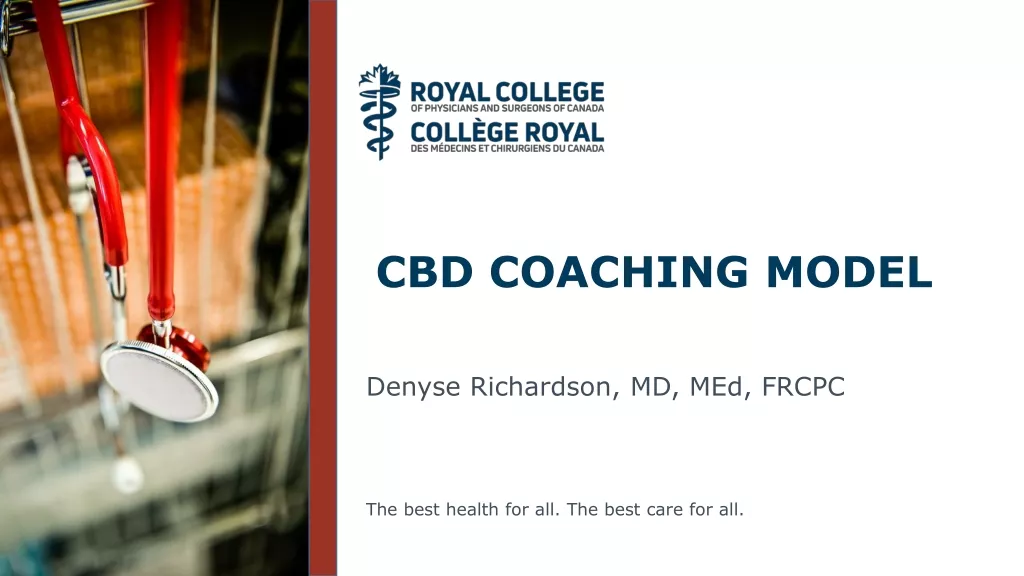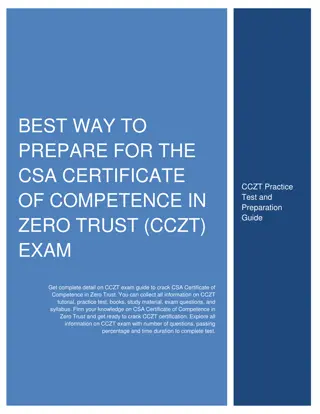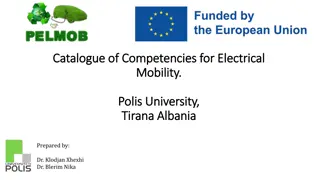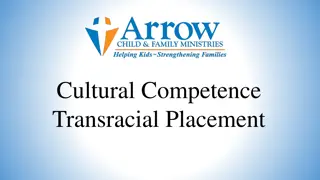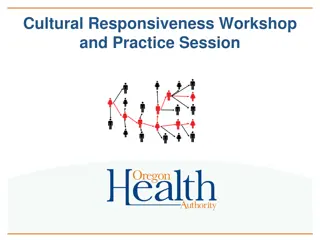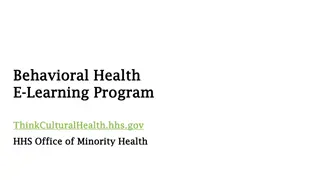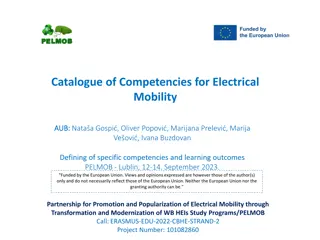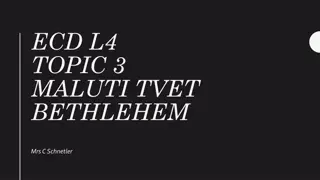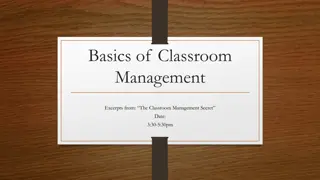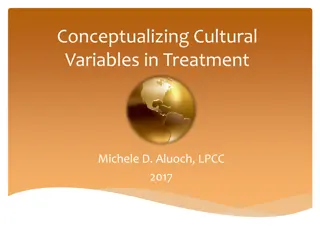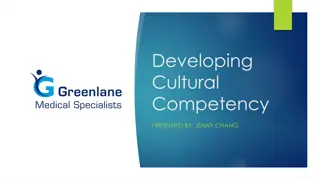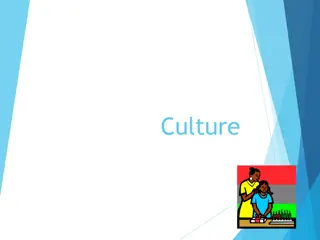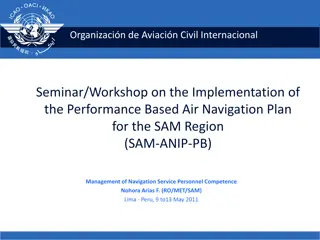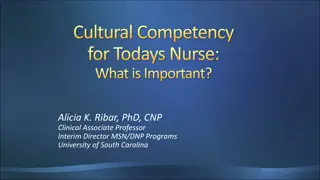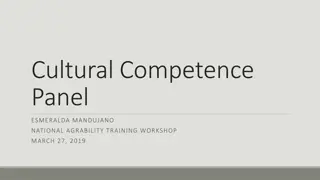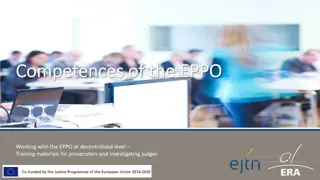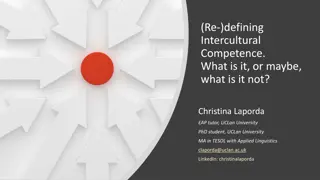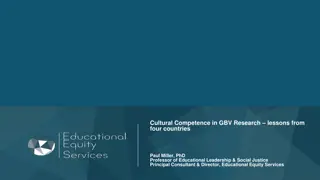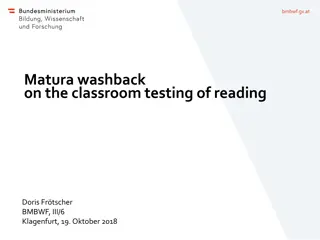Understanding Cultural Competence in the Classroom
This content delves into the importance of cultural competence in educational settings, particularly in relation to diversity on college campuses. It defines cultural competence, lists characteristics to consider like gender and ethnicity, and analyzes scenarios highlighting its significance. The discussion includes insights on understanding and addressing cultural differences to create inclusive learning environments.
Download Presentation

Please find below an Image/Link to download the presentation.
The content on the website is provided AS IS for your information and personal use only. It may not be sold, licensed, or shared on other websites without obtaining consent from the author.If you encounter any issues during the download, it is possible that the publisher has removed the file from their server.
You are allowed to download the files provided on this website for personal or commercial use, subject to the condition that they are used lawfully. All files are the property of their respective owners.
The content on the website is provided AS IS for your information and personal use only. It may not be sold, licensed, or shared on other websites without obtaining consent from the author.
E N D
Presentation Transcript
Understanding Cultural Competence in the Classroom Faculty Development Workshop April 5, 2013 Donna L. Pattison, PhD Instructional Professor Department of Biology & Biochemistry
Our Campuses are Diverse UH Fall 2012 http://www.uh.edu/ir/reports/facts-at-a- glance/Fall_2012_Facts.pdf; retrieved 4/5/2013
Define Cultural Competence Culture: Competence: Cultural Competence:
Define Cultural Competence Cultural: of or relating to the arts and manners that a group favors; denoting or deriving from or distinctive of the ways of living built up by a group of people; of or relating to the shared knowledge and values of a society (www.dictionary.com) Competence: adequacy; possession of required skill, knowledge, qualification, or capacity (www.dictionary.com) Cultural Competence: the ability of people of one culture to understand, communicate, operate, and provide effective services to people of another given culture (Allen, D. and Tanner, K. (2007) Transformations: Approaches to College Science Teaching. Chapter 14 Cultural Competence in the College Biology Classroom)
Cultural Competence 1. What is it? 2. Why should we care? 3. What are common pitfalls that reveal a lack of it? Allen, D. and Tanner, K. (2007) Transformations: Approaches to College Science Teaching. Chapter 14 Cultural Competence in the College Biology Classroom.
List at least 5 characteristics that vary between individuals that can be considered cultural considerations . 1. 2. 3. 4. 5.
Characteristics to Consider 1. Gender 2. Ethnicity 3. Religion 4. Country of origin 5. Sexual orientation Allen, D. and Tanner, K. (2007) Transformations: Approaches to College Science Teaching. Chapter 14 Cultural Competence in the College Biology Classroom.
Analyze the excerpt below: When I asked my last professor what he was looking for in an applicant for a researcher position, he said, Somebody like myself. If you were the student, what would you be thinking right now? Share your thoughts with your group. What impact might this statement potentially have on a student? Allen, D. and Tanner, K. (2007) Transformations: Approaches to College Science Teaching. Chapter 14 Cultural Competence in the College Biology Classroom.
Analyze the excerpt below: When I asked my last professor what he was looking for in an applicant for a researcher position, he said, Somebody like myself. I was very quiet and I thought, I guess I m in trouble cause I don t look very much like you . I didn t say that to him. I just thought it. -Male black science major (Seymour and Hewitt, 1997) Allen, D. and Tanner, K. (2007) Transformations: Approaches to College Science Teaching. Chapter 14 Cultural Competence in the College Biology Classroom.
Common Characteristics of Culturally Competent Educators 1. Use active learning 2. Develop a learning community in the classroom 3. Modify curriculum and instruction to match student learning styles 4. Maintain high expectations for all students 5. View culture as an asset to the learning environment 6. Generate cultural connections within the framework of teaching Allen, D. and Tanner, K. (2007) Transformations: Approaches to College Science Teaching. Chapter 14 Cultural Competence in the College Biology Classroom.
Maintaining High Expectations for All Students Pitfall: The microscope: Explaining to one student how to focus the microscope vs focusing it for another student. Topic assignment: Challenging assignment to the best students and lesser topics for other students Open discussion: Inadvertently calling on men more often than women in the classroom or vice versa. Addressing answers to men rather than the woman who asked or vice versa. Is there a hint of cultural bias in the examples above?! Allen, D. and Tanner, K. (2007) Transformations: Approaches to College Science Teaching. Chapter 14 Cultural Competence in the College Biology Classroom.
Developing Your Own Cultural Competence 1. Take time to reflect on your habits and thoughts of mind. Be honest with yourself. What do you believe? What experiences have you had to make you feel that way? Are some of your beliefs actually driven by stereotypes or television/radio models rather than real life experience? 2. Monitor your language use. 3. Using diverse role models as examples in curriculum.
Be aware of your patterns of interaction with students Who do you call on? Who do you praise? Who do you correct? Whose name do you use when referring to a group project? Who do you interact with? To whom do you tend to gravitate? Whose names do you remember? The clipboard method: If the class is small enough, track your interactions as they unfold during class.
Integrating Cultural Relevance and Diverse Role Models into Curricula Provide examples of diverse role models when possible. Case studies and problem-based learning can link content to real-world issues.
The Pygmalion Effect http://www.psychologytoday.com/blog/psychology-writers/201210/using-self-fulfilling-prophecies-your- advantage
Useful resource for faculty training: http://www.cirtl.net/CaseStudies


